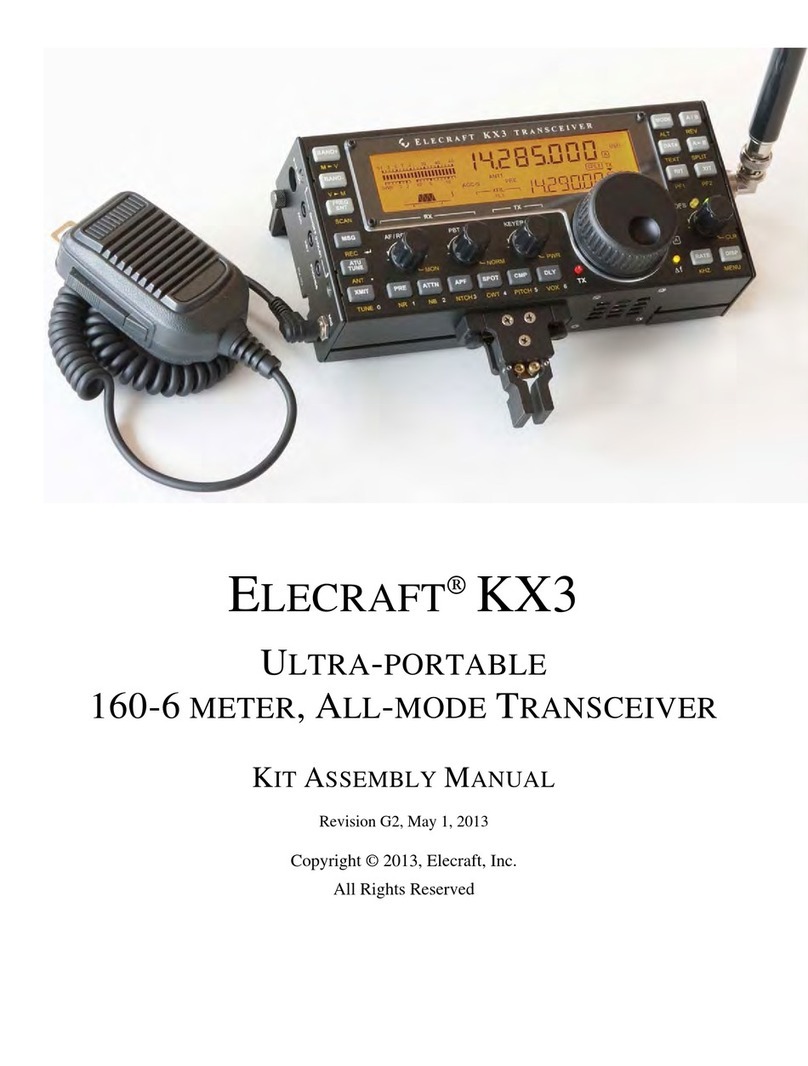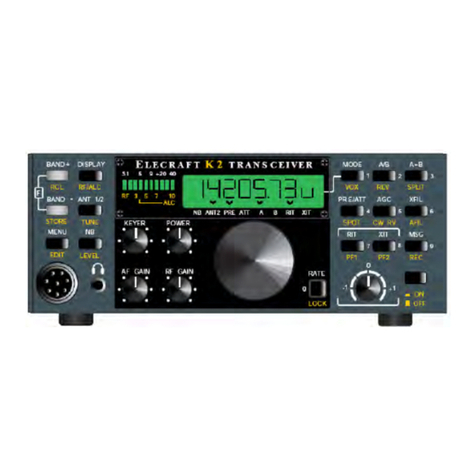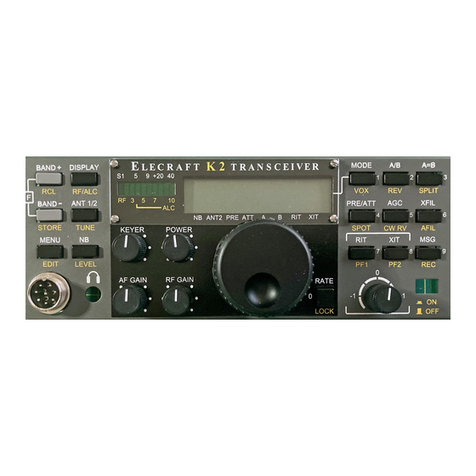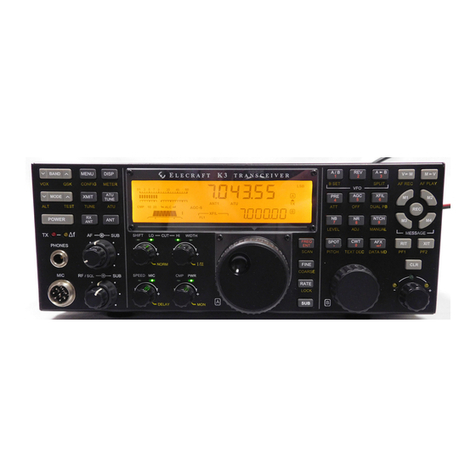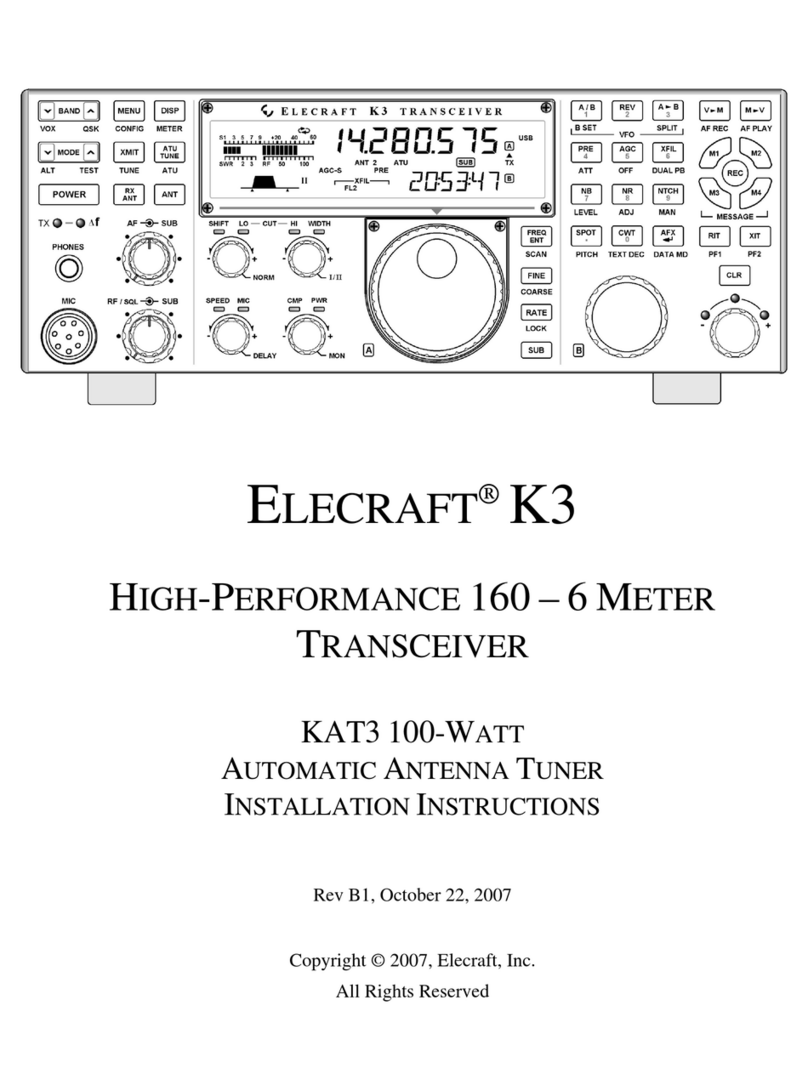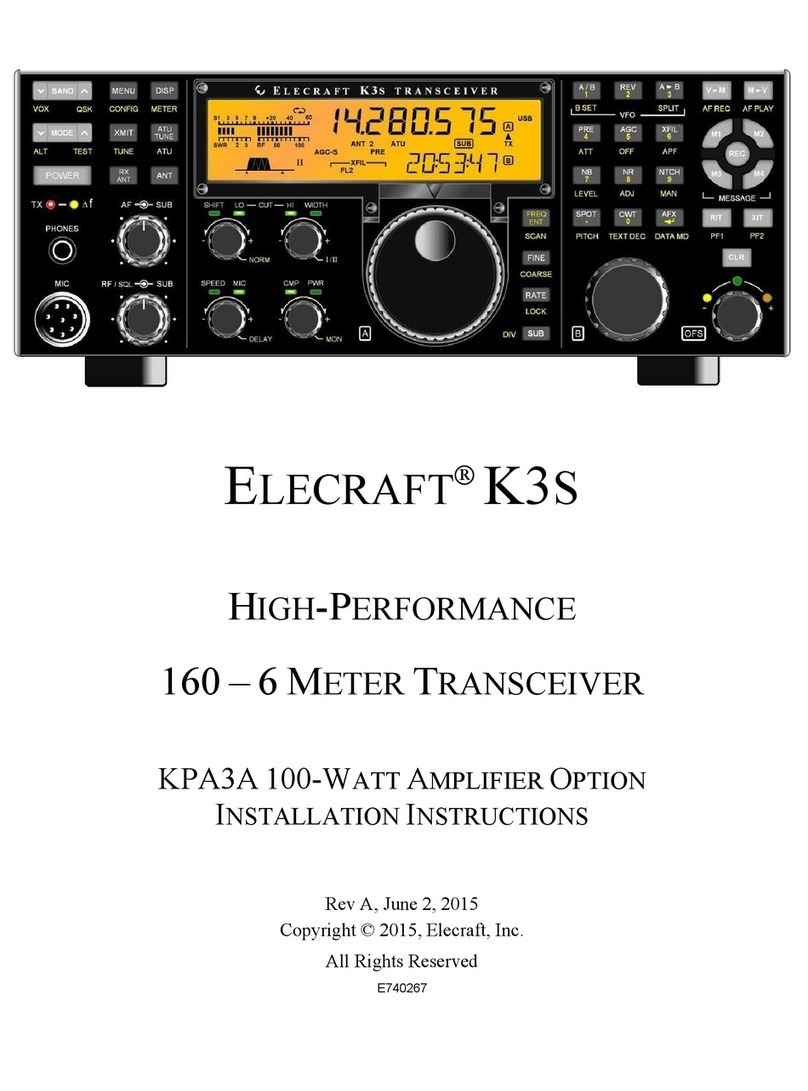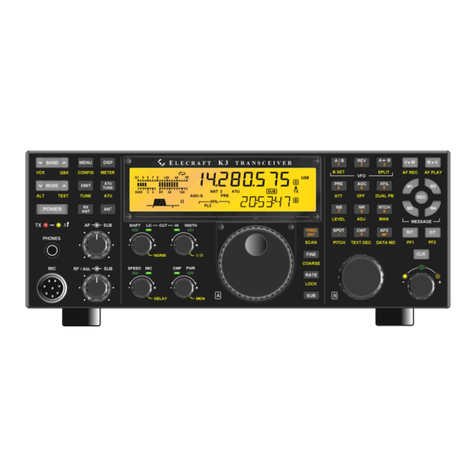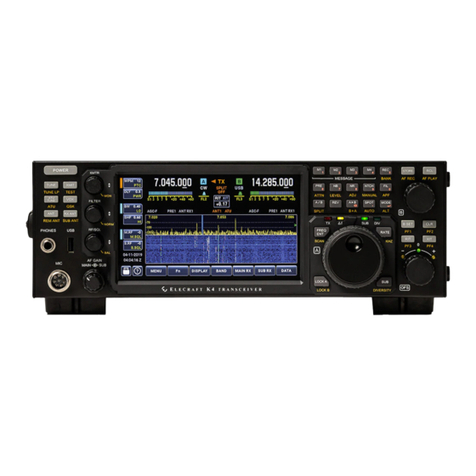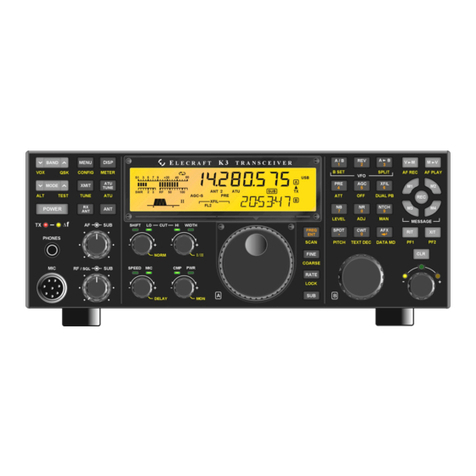
2
Contents
A Noteto K3 Owners.......................................3
Key to Symbols and Text Styles.......................3
Quick-Start Guide.............................................4
Introduction.......................................................7
K3 Features.....................................................7
Specifications..................................................8
Customer Service and Support........................10
Front Panel......................................................11
ControlGroups..............................................11
Display.........................................................12
LEDs............................................................13
Front Panel Connectors..................................13
Primary Controls...........................................13
Multi-Function Controls.................................14
VFO Tuning Controls....................................14
Keypad.........................................................15
Memory Controls..........................................16
Message Record/Play Controls.......................16
RIT and XIT Controls....................................16
Rear Panel.......................................................17
Connector Groups..........................................17
KIO3 Module................................................18
Basic Operation..............................................21
Receiver Setup..............................................23
Reducing Interference and Noise....................25
Transmitter Setup..........................................26
Voice Modes (SSB, AM, FM)........................28
CW Mode.....................................................30
Data Modes...................................................31
Advanced OperatingFeatures.........................33
Text Decode And Display..............................33
CW-to-DATA...............................................34
Tuning Aids: CWT and SPOT........................34
Audio Effects (AFX)......................................35
Dual Passband CW Filtering...........................35
Receive Audio Equalization (EQ)...................35
Transmit Audio Equalization (EQ)..................35
SPLIT and Cross-Mode Operation..................36
Extended Single Sideband (ESSB)..................36
General-Coverage Receive.............................36
VFO B AlternateDisplays..............................36
Alarm and Auto Power-On.............................36
Using the Sub Receiver..................................37
Receive Antenna In/Out.................................38
Buffered I.F. Output...................................... 38
Using Transverters........................................ 38
Scanning...................................................... 39
Main and Sub Receiver Antenna Routing......40
Basic K3 (no KAT3 or KXV3) ...................... 40
K3 with KXV3 RF I/O Module...................... 40
K3 with KAT3 ATU..................................... 41
K3 with KAT3 and KXV3............................. 42
Remote Control of the K3..............................43
Options...........................................................44
Firmware Upgrades........................................44
Configuration.................................................45
Crystal Filter Setup....................................... 45
Option Module Enables................................. 46
Miscellaneous Setup...................................... 46
VFO A Knob Friction Adjustment................. 47
VFO B Knob Friction Adjustment.................. 47
Real Time Clock Battery Replacement........... 47
Calibration Procedures...................................48
Synthesizer................................................... 48
Wattmeter..................................................... 48
Transmitter Gain........................................... 48
ReferenceOscillator......................................49
Front Panel Temperature Sensor.................... 50
PATemperature Sensor................................. 50
S-Meter........................................................ 50
Menu Functions..............................................51
MAIN Menu................................................. 51
CONFIG Menu............................................. 52
Troubleshooting.............................................59
Parameter Initialization................................. 61
Module Troubleshooting............................... 62
Theory Of Operation......................................66
RF BOARD.................................................. 66
KANT3 and KAT3....................................... 68
KIO3............................................................ 68
Front Panel and DSP..................................... 68
KREF3......................................................... 69
KSYN3 ........................................................ 70
K3 Block Diagram........................................ 71
AppendixA: Crystal Filter Installation..........72
Index...............................................................76


